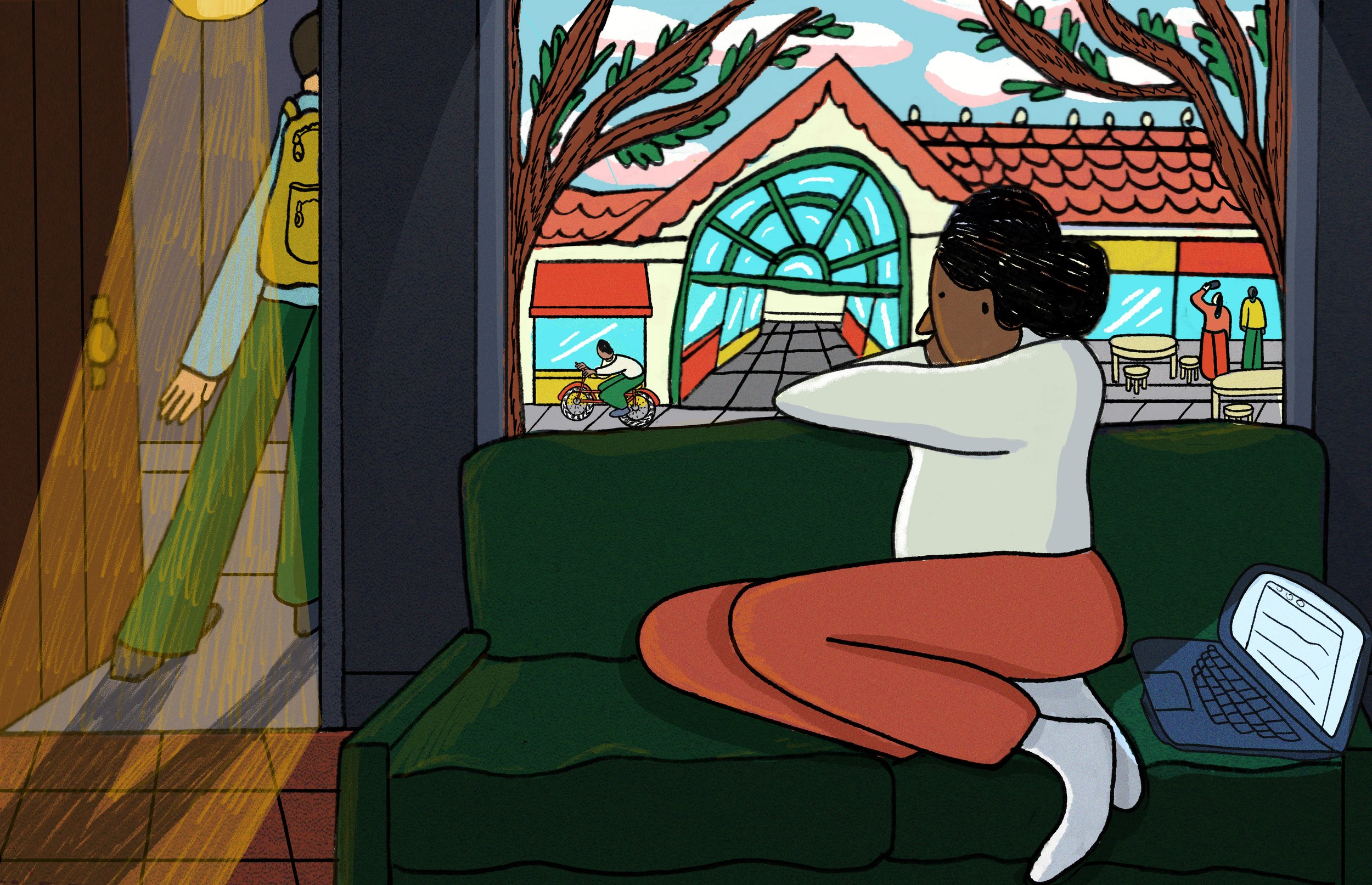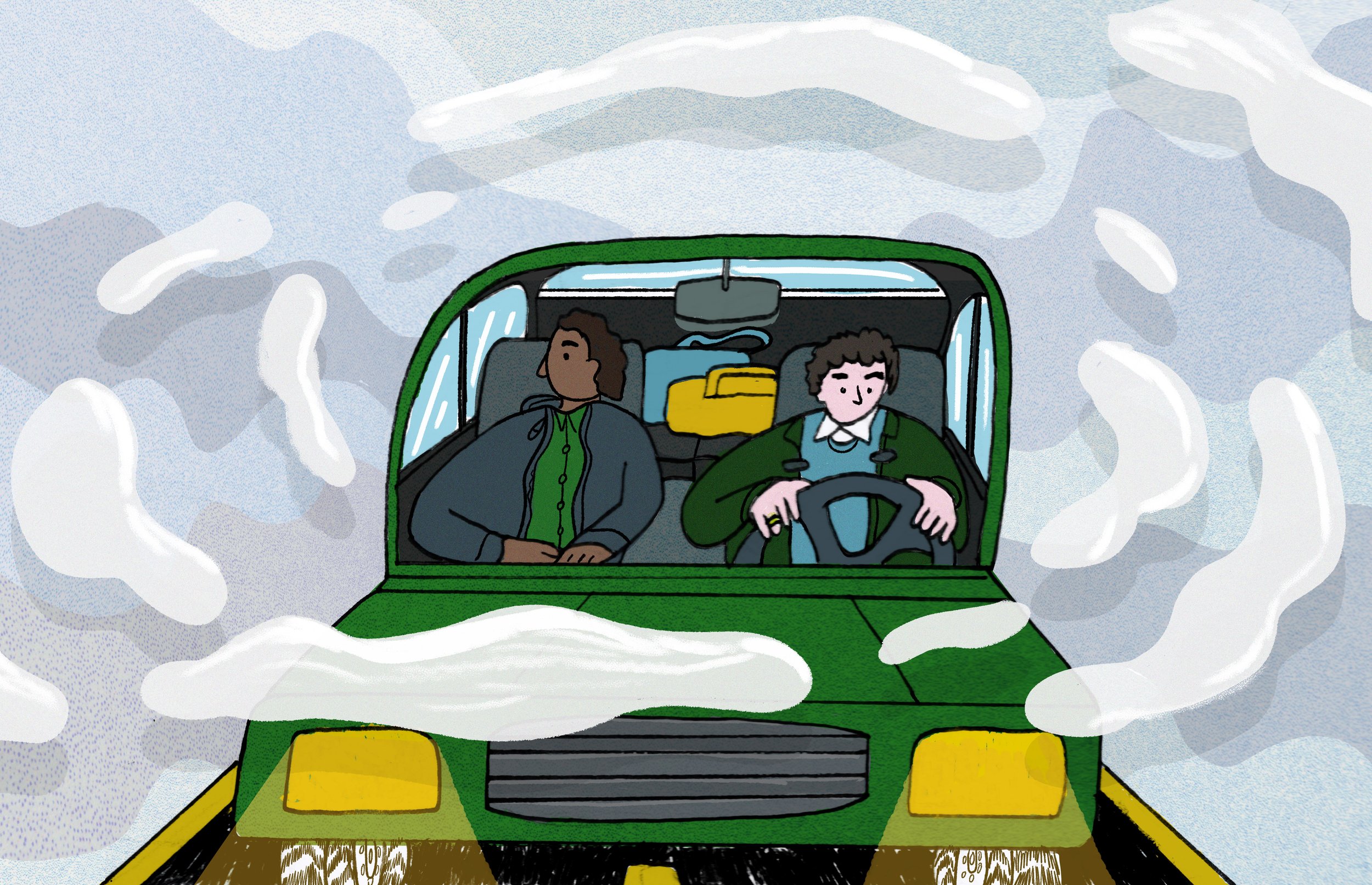10 p.m. in Muriwai

Listen to this essay on the Atlas Obscura podcast.
10 p.m. in Muriwai is too late to walk home. Not because it’s dangerous, but because it’s so dark. You set off alone anyway, leaving the shine of the surf club’s dusk-to-dawn lights, and cross the beach. The night is thick with ice points of stars. You feel, not see, the coarse black sand ridging up around your shoes, make out the shimmer of the ocean, hear the roar of the breakers. You counted fourteen rows of them earlier. The sound of that many waves isn’t soothing. It stirs you up, makes you feel uneasy, a rung away from fight or flight. The wind coaxes goosebumps from your skin, and you try to figure out the equivalent of this month in the northern hemisphere. November? You reach the strip of New Zealand jungle.
Stars don’t penetrate this darkness. Your phone is dead; your digital camera, however, still has some juice. You take a photo and the flash flares, illuminating the mouth of the path to the artist house where you’re staying. You move a dozen feet or so, take another photo. For a fragment of a second, a fat tree fern is visible. You make it fifteen feet, only stumbling once. You hit the flash again. A deep dip and then a climb up. You can’t stop imagining what kind of goblins or ghosts or shiny eyes will show up on the photos when you’re home to look at them.
You take ten, twelve, fifteen photos, each one granting a few more feet of safe passage. Then you’re out of the trees, running across the cut grass, shivering with adrenaline. You know where the light switch is—in the cluttered shed by the studio. You hit the camera flash one last time, reaching to find it. Light blazes, and you take in the towering nikau palm tree where the iridescent wood pigeon roosts, the outlines of fronds and leaves against an extravagantly dark sky.
Once inside, you’re struck by how the artist house is practically clear, a glass house with windows large and expanding around you. During the day, they let in bright and cheerful light. But tonight, the glass walls let the darkness in. You feel it intruding even through the faint vibration of electric lights. Not menacing, exactly. Just insistent.
It’s only you here. Even the caretaker lives next door in a yurt. You’re not sure if you want to look at the pictures you took in the dark. You remember reading a list of the most dangerous animals in each country; the author had to dig deep for New Zealand, listing the kea, an alpine parrot, because it likes to chew on exposed rubber on cars. Nevertheless, there’s something uncanny about the forest at night, and Muriwai is not immune to spirits and apparitions.
When you finally look at the photos on the camera’s two-inch screen, you hear again the rustle of the dried leaves and your feet crushing the fallen brown palm fronds. You jump at the sight of something small and impish in one photo, though it’s probably just an oddly-shaped stump. You’d hoped to see a shy nocturnal kiwi bird, but the photos are just strange brightness reflecting off trunks and logs, oddly sinister, but maybe that’s just your heart racing from running through the dark. You stow the camera on a high shelf.
It’ll soon be time to leave, and then you’ll be navigating city nightscapes illuminated by streetlights and fanged with danger. Part of you wants to run the path again, whooping and screaming for any spirits to carry you off, to keep you in Muriwai, to make you part of it.
About the Author
Hallie Pritts is a writer from Pittsburgh. She’s a Sewanee Writers’ Conference alum, a former artist-in-residence in New Zealand, a Chautauqua fellow, and the recipient of the Composing Your Life music and writing fellowship from the Writers Colony at Dairy Hollow. Her work has appeared in McSweeney’s, The Fourth River, and The Belladonna. She writes fiction about UFOs, ghosts of 1970s rock stars, and beauty and decay in rural America.
The photos from that night in New Zealand can be seen here.
Illustration by Jane Demarest.
Edited by Tusshara Nalakumar Srilatha.











